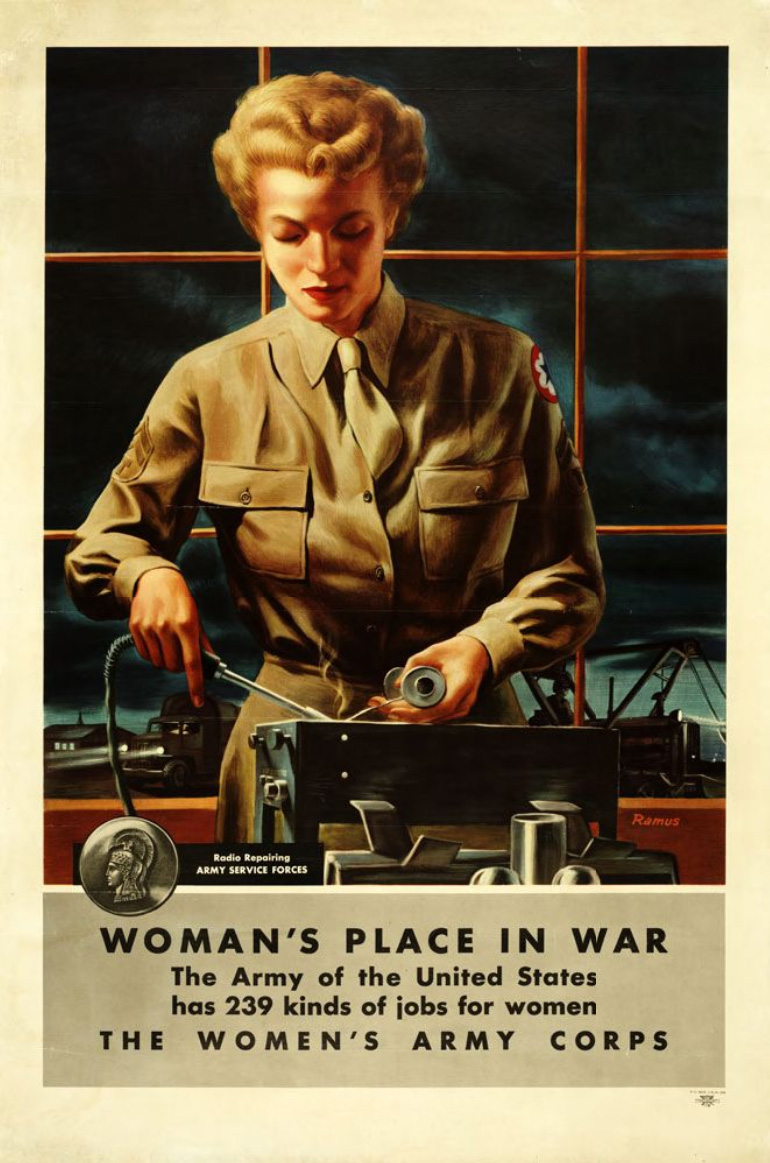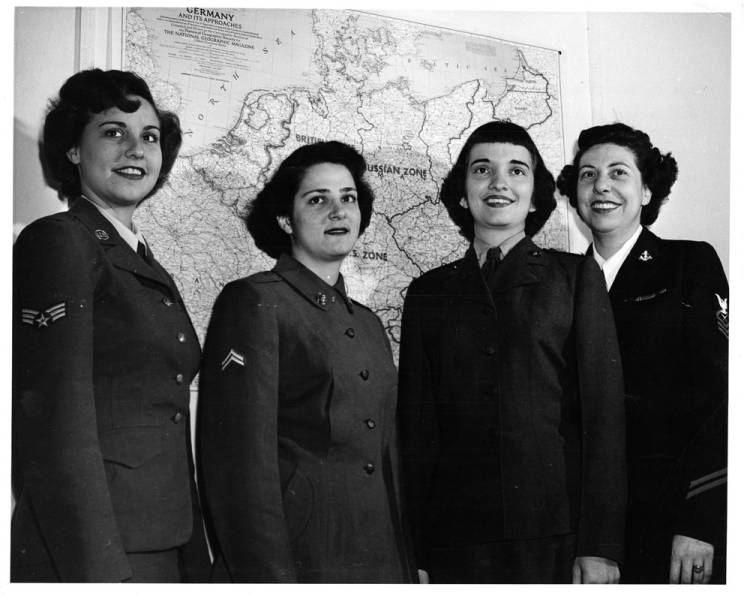75th Anniversary of the Women’s Armed Services Integration Act
On June 12, 1948, President Harry Truman signed into law the Women’s Armed Services Integration Act. The law enabled women to serve as permanent, regular members of the armed forces in the Army, Navy, Marine Corps, and the-then recently formed Air Force. In 2023, we mark the 75th anniversary of this important legislation. As a result, the Museum & Library will be highlighting the impactful moment in history throughout the year with accomplishments of women who have served in and with the United States Armed Forces from the colonial era to the present day. This initial installment in the series is intended to serve as a very preliminary introduction to the history of women in the United States military.
Women have supported and participated with the United States military for generations. During the American Revolution and the War of 1812, they were responsible for the cooking, laundry services, and assisted in the provision of medical services. They also secured general supplies for the Army, provided intelligence on enemy positions, procured saltpeter (a component of gunpowder), and made gunpowder alongside numerous other tasks. A few notable women even served on the front lines and at Valley Forge. For example, Mary Ludwig Hays (1754-1832) participated in the Battle of Monmouth in June 1778. Initially, she carried water to the artillerymen and other American soldiers during the battle while under fire from the British. Her husband, William Hays, was a member of Proctor's 4th Pennsylvania Artillery. When he fell in the battle, she took his place loading the cannons. For her service during the American Revolution, she received a pension from the Commonwealth of Pennsylvania.
During the Civil War, many women served as nurses and sanitary agents with the United States Sanitary Commission and the Christian Commission. Dr. Mary Walker was a contract surgeon with the United States Army and the only woman to receive the Congressional Medal of Honor to date. Other women dressed as men and fought as soldiers until they were discovered and discharged from service. Some brave women repeatedly crossed the battle lines to provide intelligence on the location of combatant forces. Many of these women later received pensions from the federal government for their documented service during the Civil War.
World War I brought new challenges. On the home front, American women did more than support the war effort with Liberty Gardens and charitable work. The United States Navy admitted women to their ranks as Yeoman (F). These women initially performed clerical duties, but their duties expanded to include other stateside contributions including service as radio operators, electricians, and pharmacists. The United States Army needed individuals who could answer telephones, operate radios, and speak the French language. The women who were recruited to perform these services overseas with the United States Army would become known as the Hello Girls. Other women found ways to actively participate in the war; some served with the Red Cross as nurses while others served as ambulance drivers.
Women expanded their contributions of military service during World War II through serving in the Women’s Army Corps (WACS), Women Accepted for Volunteer Emergency Service in the United States Navy (WAVES), United States Coast Guard Women's Reserve (SPARS), and the Women Air Service Pilots (WASP’s). By the end of the war, approximately 350,000 women had served overseas and at home.
In 1946, the leadership of the United States Army requested that the Women’s Army Corps remain part of their personnel. After two years of debate in Congress on women’s roles in the military, a bill was passed in the spring of 1948. President Harry S. Truman signed the legislation on June 12, 1948, enabling women to serve in all branches of the military. However, it limited women’s numbers to two percent of the personnel force for each service.
During the Korean War, 120,000 women served on active duty in the branches of the United States armed forces. Many of these women were nurses, but they did serve in other professional roles including as engineers.
During the Vietnam War, women again served in active-duty roles in a growing variety of occupational specialties.
Since the Vietnam War, women have taken on additional military occupational specialties. Defense Secretary Leon Panetta announced in 2013 that women would be allowed to serve in combat roles. By 2015, the plan to allow women more occupational choices within the military had been implemented. Today, they serve in the military in all branches and are no longer banned from serving in direct combat.
To learn more, read:
Blanton, DeAnne, and Lauren M Cook. They Fought Like Demons: Women Soldiers in the American Civil War. Conflicting Worlds. Baton Rouge: Louisiana State University Press, 2002.
Cobbs Hoffman, Elizabeth. The Hello Girls: America's First Women Soldiers. Cambridge, Massachusetts: Harvard University Press, 2017.
Eder, Mari K. The Girls Who Stepped Out of Line: Untold Stories of the Women Who Changed the Course of World War II. Naperville: Sourcebooks, 2021.
Goldsmith, Connie. Women in the Military: From Drill Sergeants to Fighter Pilots. Minneapolis: Twenty-First Century Books, 2019.
Holton, Woody. Liberty Is Sweet: The Hidden History of the American Revolution. First Simon & Schuster hardcover ed. New York, NY: Simon & Schuster, 2021.
Monahan, Evelyn, and Rosemary Neidel-Greenlee. A Few Good Women: America's Military Women from World War I to the Wars in Iraq and Afghanistan. 1st ed. New York: Alfred A. Knopf, 2010.
Mundy, Liza. Code Girls: The Untold Story of the American Women Code Breakers of World War II. First ed. New York: Hachette Books, 2017.
Roth, Tanya L. Her Cold War: Women in the U.S Military, 1945-1980. Chapel Hill: University of North Carolina Press, 2021.
Wilcoxson, Samantha. Women of the American Revolution. Barnsley: Pen & Sword History, 2022.
Or watch:
Challenges of Diversity in the U.S. Military
Changes and Challenges: Women in Today's Military
Elizabeth Cobbs: The Hello Girls
Pamela Toler: Heroines of Mercy Street
